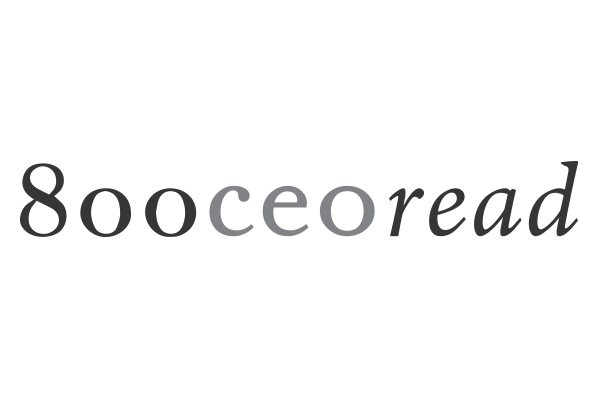By Alan Lewis and Dan McKone
The following article was first published as L.E.K. Consulting Executive Insights’ Volume XVI, Issue 3 on January 24, 2014.
In a lower-growth environment, many companies look beyond their core business. But in scanning the horizon for new markets and new products, companies often overlook an enormous, untapped source of profit that exists in the near-field – on the edge of the core business through the sale of ancillary goods and services that actually make a customer’s interaction with the core business more complete. By adopting an Edge Strategy™ mindset, you can exploit this source of profitable growth.
In this article, L.E.K. Consulting Managing Directors Alan Lewis and Dan McKone discuss when bundling is the right Edge Strategy approach, as well as the attributes that can maximize the value of bundled offerings.
As earlier installments in this series have shown, a variety of industries generate enormous value by offering ancillary products and services on the “edge” of their core offering: Movie houses sell popcorn and other concessions; consumer truck rental companies sell cardboard boxes and other packing supplies; airlines offer expedited boarding and other extras; etc. Businesses approach how they sell such products and services in different ways. Some choose to bundle ancillary offerings – for instance, resorts sell VIP packages that include ground transport, spa treatments and premium beverages in a single purchase. Others offer à la carte edge options – for example, rental car companies offer customers a menu of discrete add-ons that include rental insurance, pre-paid fuel, GPS systems, child seats, and more. Both pricing approaches can be successful. So when should an executive looking to pursue an edge strategy bundle? What are the pros and cons of this popular pricing technique?
At L.E.K. Consulting, our thinking on bundling has evolved over time. In the late 1990s, we helped the U.S. telecom industry pursue an Edge Strategy mindset. Back then, the core offer was “fixed-line access” – house phones that plugged into wall jacks. To capitalize on an essentially captive customer base (changing telecom providers is a tedious ordeal), we helped one of our clients developed a strategy to sell a variety of edge offers, in the form of caller ID, voice mail, call-waiting and other offers. These products all had separate, small, but extremely high-margin monthly charges, and their sale was enabled by the successful execution of the core offer; it was a textbook Edge Strategy approach.
Then something interesting happened. Given the lucrative nature of their ancillary offerings, our client grew enthusiastic and began to multiply the options available to customers. Before long, they were bombarding customers with too many choices and experiencing diminishing returns.
The answer to this (now clear in retrospect) was to start “bundling” products together into three or four easy-to-digest plans. Plans were targeted at individual customer segments with features tailored to entice each segment (e.g., deals based on calling family and & friends, etc.). The result was a curious and pleasing phenomenon – the bundled Edge Strategy plan proved even more successful than its original incarnation. Instead of buying, say, two value-added services, customers would purchase three to four value-added services as the bundle effectively convinced them to trade-up. Customers found the bundled presentations much easier to digest, and a fair reflection of the total price value of the combined offerings. We discovered that bundling, when done well, could be an extremely powerful tool in presenting edge offers.
Bundling on the Edge
Bundling is a well-established pricing strategy that many industries have used for their core offerings for years (see: McDonald’s Happy Meals). It can improve revenue by increasing the volume of products sold, and in some instances enhance profitability by boosting purchases of higher-margin variations of the core product. Bringing bundling to edge offerings works the same way, but it poses unique challenges since such products are secondary, by definition, in customers’ minds; therefore, the burden of communication is higher.
Airlines have struggled particularly with the decision of whether or not to bundle their edge offerings. Five years ago, airlines began the process of unbundling their core proposition into variations involving seats, bags, service levels and speed, even the rate of mileage accrual in frequent flier programs. This was highly effective and resulted in billions of dollars in incremental revenue – along with consolidation, it arguably saved the industry. But as an increasing number of ancillary products and services became available, many customers were overwhelmed with choices, and others grew frustrated with the sense that they were being nickel-and-dimed. Airlines are now responding by re-bundling many ancillary offerings in a way that more cleanly conveys value to the customer. American Airlines now offers three bundle options – Choice, Choice Essential and Choice Plus – each with an expanding set of ancillary options for a higher price. Other airlines are pursuing similar tactics and attempting to target groups of passengers that share the same needs during their journey. In the same way that a car dealer upsells a customer from heated seats to a “cold-weather package,” airlines and similar industries are learning to increase average ticket prices by creating bundles that make sense in the customer’s mind.
When to Bundle
There are several key questions that executives should ask when deciding whether to bundle edge offerings:
- Do your secondary offerings appeal to the needs of a discernible customer segment? Bundling edge offerings will only be as successful as a company’s segmentation analyses and its understanding of the needs of different groups of customers. A bundle’s complexion and value proposition – right down to what the bundle is labeled – must be instantly clear to the customer group being targeted. A smartphone manufacturer (or retailer), for example, might bundle various accessories with the hardware into an “Athlete Pack” or a “Business Traveler Pack.” Offering edge items that are complimentary (to each other and to the core product) is important. If they are not, a bundle will seem illogical to the customer.
- Are the intrinsic economics of bundling attractive? Profitability in the bundle can often be ensured through exploiting some selling synergy or amortizing a fixed cost required for the core offer. When a major U.S. consumer electronics retailer asked us to set up an Edge Strategy plan, we found that services were the logical place to go. On the back of the core sale, customers were presented with add-ons (e.g., extended warranties, installation service, etc.). Some of these services required a visit to the customer’s home, which provided an opportunity to sell a range of ancillary items (e.g., installing a flat- screen TV could result in upselling new speakers and additional home-theater integration services). Manufacturers and medical technology companies have found their customers’ desire to minimize hassle has given them permission to bundle professional services – financing, training, consulting – with their products. We particularly like the idea of bundling “peace-of-mind” edge offerings to layer high-margin economics onto a modest core sale.
- Is the core sale large (and relatively infrequent)? Bundling is often successful when a core purchase decision is a major, discrete shopping event – such as buying a car, a phone service, or a major piece of medical equipment. In these cases, choices can be overwhelming and the bundling can help reduce the complexity of the high- stakes decision. In situations where the “shopping” is more frequent or the engagement more sustained – for example, airline travel – à la carte options can easily be offered not only at the point of the initial purchase but during the entire engagement with the customer. For instance, an airline passenger has multiple opportunities to buy a seat upgrade – online, at check-in, at the gate, etc. It is also worth noting that these à la carte offerings do not preclude the ability of airlines to sell the upgrade at the initial purchase point as part of a bundle.
What to Include in the Bundle
If you’ve already decided that a bundle is appropriate for your edge offering, you then must ask yourself, “Which products should I include, and how do I price it?” A few principles can help guide this decision:
- Identify products that meet the customers’ needs. When approaching bundling, many executives focus on their products and how they may logically fit together – a common mistake that puts the cart before the horse. Instead of looking at your products, take a hard look at your customers and what they need, and then create a bundle that meets those needs. For a business traveler who is too rushed to eat, wants to look professional, and has to be prepared for meetings, a hotel might bundle meals-to-go, ironing service and tiered high-speed data. It might even consider adding products it previously never offered à la carte – a facility to leave bags over the week- end for a commuting executive? – that would enhance the bundle.
- Offer price tiers. When a customer considers purchasing a bundle, price and value is at the front of his or her mind. Thus, companies should sell different pricing options for customers of varying price sensitivity.
- Offer a curated set of bundles. Reducing complexity is a powerful reason for bundling, so it is best to avoid the temptation to customize too much. As a rule of thumb, three bundles is a good target – research suggests that offering three tiers pushes people into the middle tier, which can be crafted to be quite lucrative to the seller. Having only a few bundles means that not all of the products and services in a bundle will be used and valued by everyone. That is OK. (How many of us have used everything in the Microsoft Office suite?) Bundles should be priced with the assumption that consumers will only value some of the bundle – after all, your goal is to find the minimum amount of products and services that allure a customer into purchasing the bundle.
- Pricing should not be overly transparent. If it’s too easy for customers to calculate the prices of individual items, they may decide they don’t like one item, which can very quickly sour their perception of the value of the entire bundle. Customers should not be shown line-item pricing for each item in a bundle, which tends to shift their focus away from the value of the entire package and places it instead on individual items.
Whether bundling is right for implementing an Edge Strategy plan will vary across and even within industries. The decision is highly dependent on both the breadth of edge products and services that an organization is able to deliver, as well as the profile of an organization’s customer base. Furthermore, bundling should be a fluid strategy, and it may make sense to bundle and unbundle as an organization’s Edge Strategy plan evolves. Finding and monetizing the edge can be incredibly valuable; the bundling decision is critical to unlocking the full potential of an Edge Strategy mindset.




